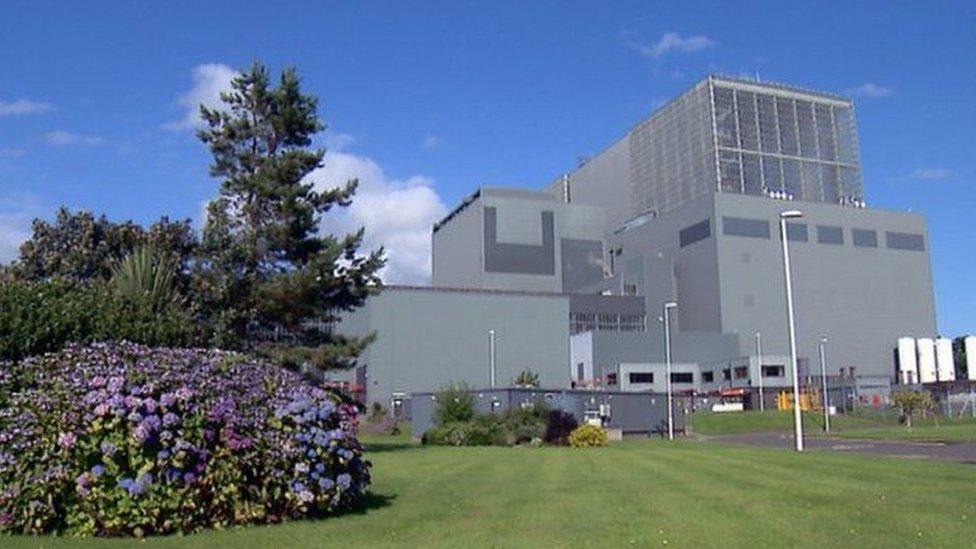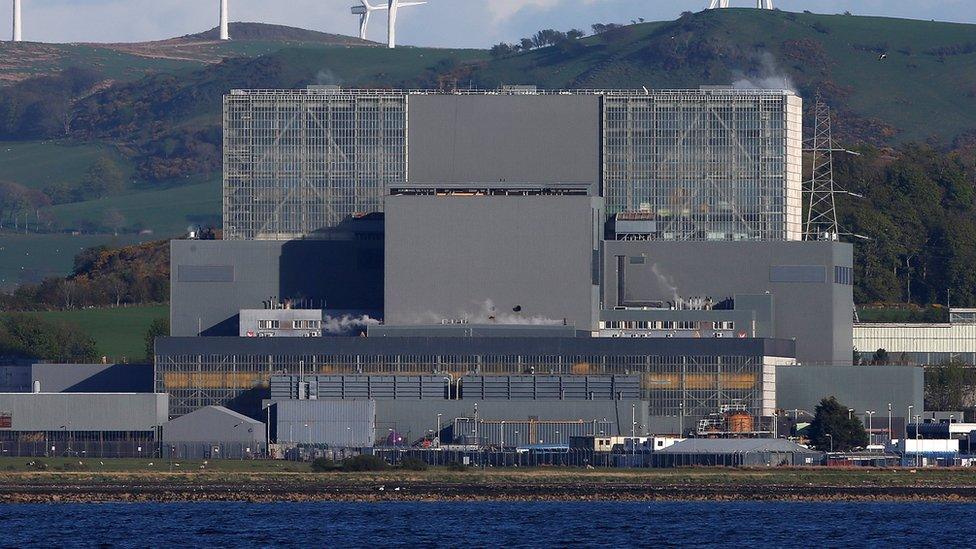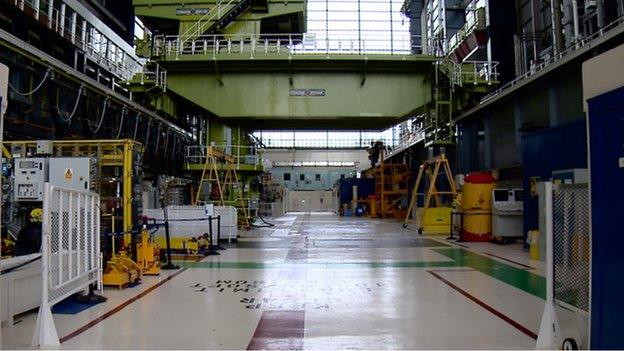Hunterston Q&A: What do cracks mean for future of power plant?
- Published

More cracks have been found in reactor three at Hunterston B nuclear power station. But what does this actually mean for the Ayrshire plant?
Kevin Keane, BBC Scotland's environment, energy and rural affairs correspondent, explains.
How many reactors does the plant operate?
Only two are still operating at Hunterston B - reactors three and four. The other two are already in the process of being decommissioned.
Was this unexpected?
The cracks are something they have expected to happen to the graphite in the core of the reactor for a very long time. There is a regular inspection programme to look for them, but what surprised the operator this time is the sheer number of cracks. The first three cracks were found in the reactor in 2015, and another five last year. In May they discovered 31 new cracks which is more than they had anticipated. Now the total has risen to about 350.
What do the cracks actually mean?
The cracks limit the life of the plant. They sit in the channels of the core where the control rods slot in to suppress the nuclear reaction and shut down the plant. In a worst case scenario, if there was a seismic event, these cracks may have distorted the channel and that could mean that the control rods could not go in. The plan is to decommission the plant well before that ever becomes a possibility. Ultimately, there would become a point where these cracks were so great in number that Hunterston would shut down permanently. At the moment, it is only expected to continue operating until 2023.
Can they repair the cracks?
No, there is nothing they can do about them because they in part of the reactor where humans simply cannot go. That is why there is so much money spent on research to understand them and monitor them.
What will this mean for overall output at Hunterston?
Essentially output is halved. This reactor generates about 530 megawatts of power. Last year that was enough to power 900,000 homes for the year. But there is no suggestion that this would lead to the lights going off. The UK now has a broad range of energy sources from gas to hydro to wind and an awful lot more nuclear.
Why are they keeping it offline until the end of the year?
Operators EDF Energy have previously said they could put bring reactor back online but they wanted to wait until the end of the year while they re-examined the safety case for the longer term and tried to learn as much as they could about these cracks. The regulator praised them for that and for taking a conservative approach. EDF are now preparing an updated safety case for the regulator but say their intention is still to bring the reactor back into use.
- Published3 May 2018

- Published6 October 2014

- Published7 August 2014
